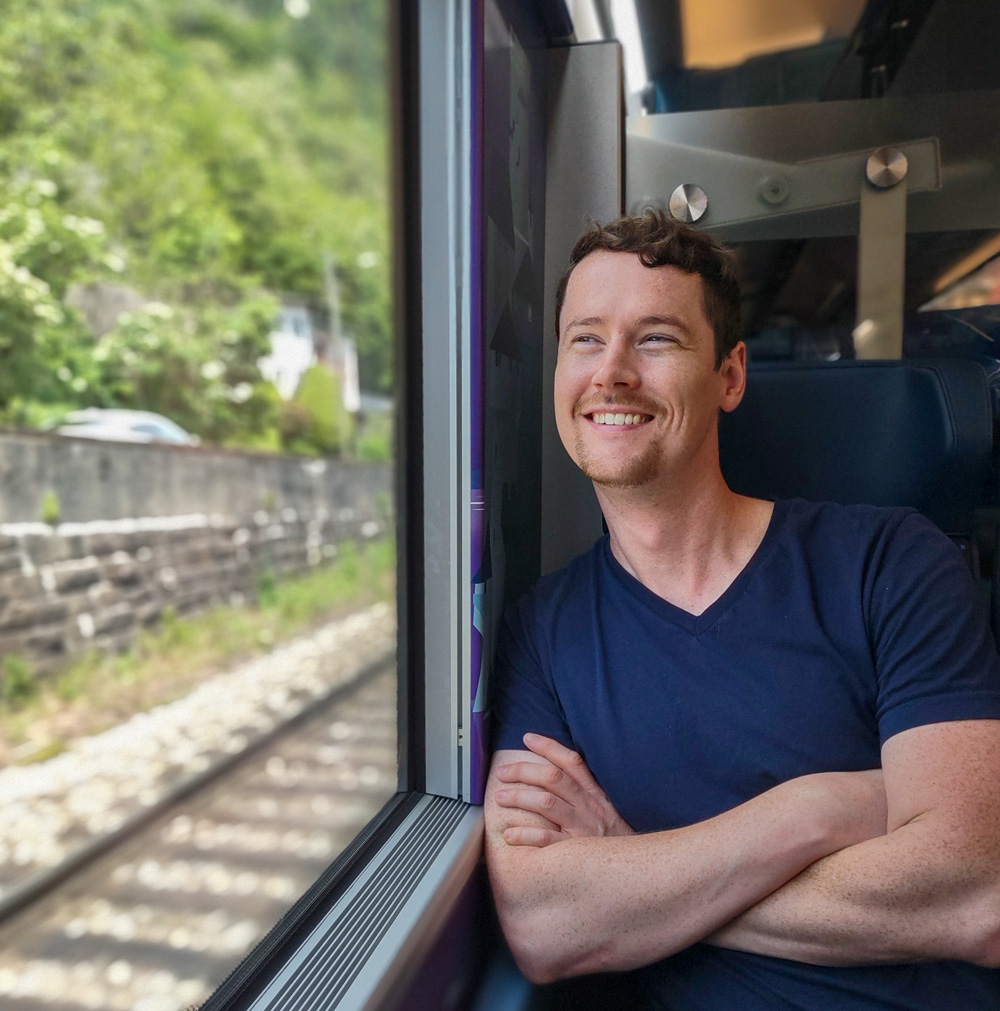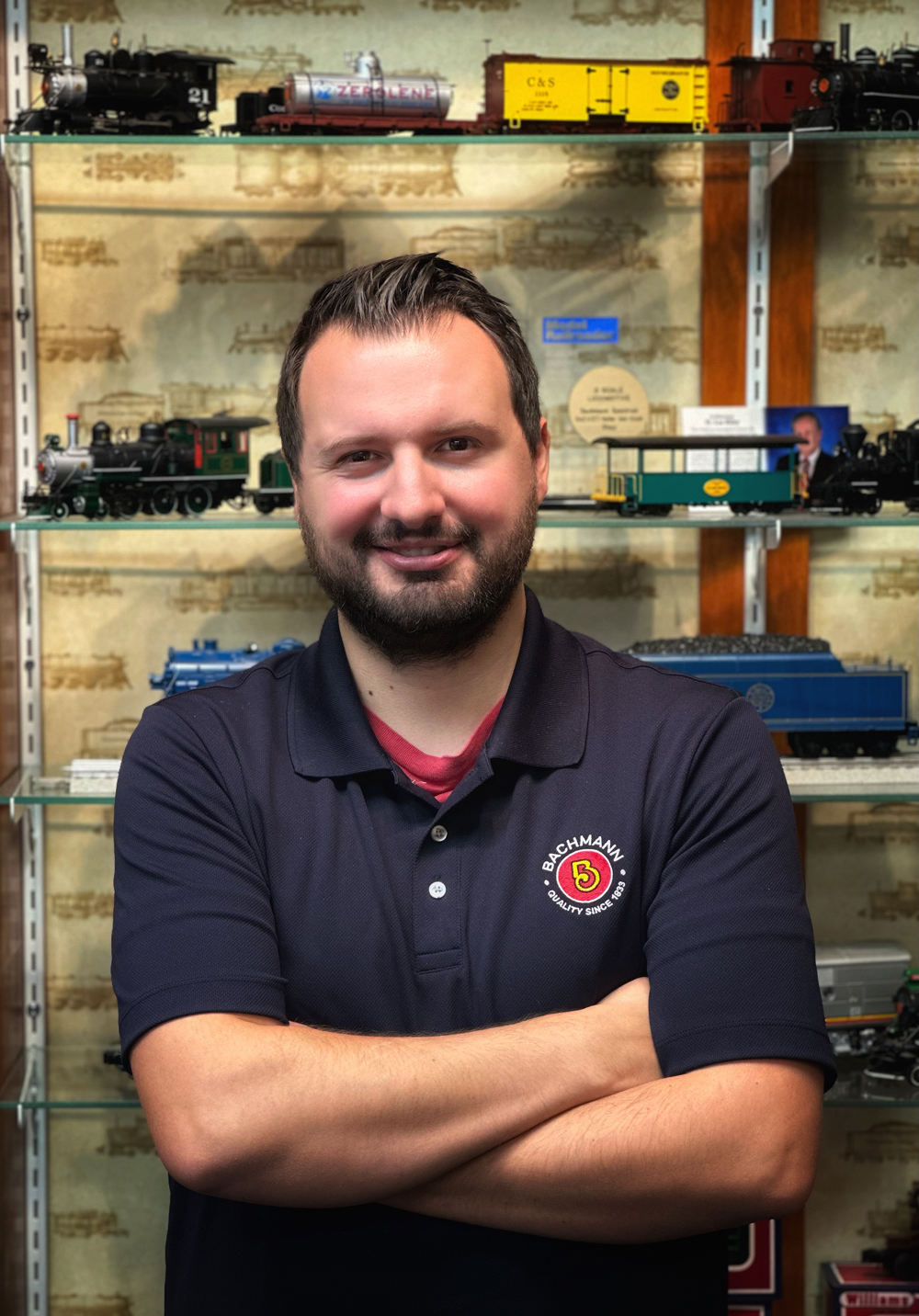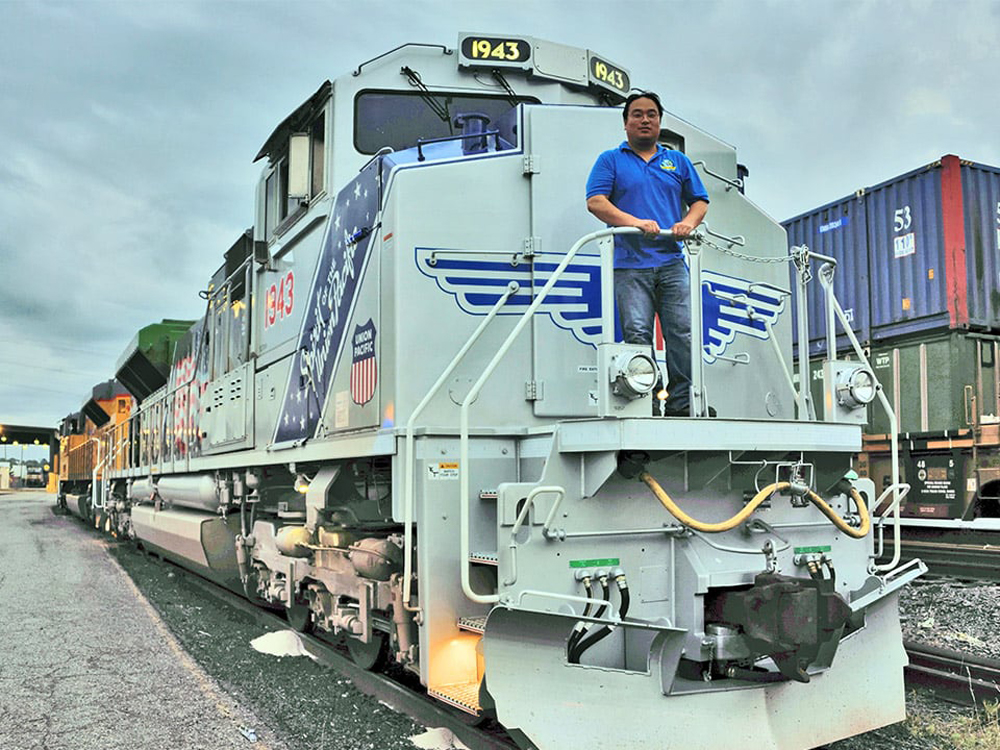In 2023, I wrote an article about four young men under the age of 40 that were either modelers or worked in the model railroad industry. I had noticed a lot of young people working for various manufacturers at the National Train Show in Grapevine, Texas.
Since then, I had the opportunity to attend the Amherst Railway Society’s Railroad Hobby Show in Springfield, Mass. Once again, there was the perpetual buzz about the future of the hobby not being as bright as some want it to be. A large contributing factor in the most recent show being the closing of Hattons and M.B. Klein. Despite those who don’t believe the hobby is thriving, the Amherst show had a record attendance day on Saturday of 22,657 attendees. The total population of the show ended up being over 26,000 (with those who attended both days only counting once). These are outstanding numbers for this show, and I was able to meet two of the following gentlemen at the show.
This is a great hobby with a bright future in front of it, due in part to the work by these gentlemen in their respective companies.
Jeff Lassahn (Rapido Trains)
How did you get started in the industry?
Actually through a forum post! It turns out that model train product design is a very specific set of skills and interests, so the hiring process has to follow some unusual paths.
What is your position at Rapido?
I’m a Project Manager. In that role, I guide a project from start to finish. At the very beginning, that includes the fun step of figuring out what to make and assessing what the market will be for it. After that, a project moves to research, design, and preliminary artwork; then final designs, review, and tooling. Once samples arrive, I review those and send improvements to the factory. When samples reach final quality checkpoints, we close order deadlines and move to production. Ultimately, there is a lot of communication to the factory, experts, and other internal steps along the way to bring the project through to market.
Do you have a favorite aspect of modeling? (structures, trains, scenery, etc.)
I have a few. I’ve always enjoyed weathering to re-create years of wear and grime. Following that, when I’ve built layouts — all modules — I like to re-create track accurately, from ballast color to joint bars and switch detail. Admittedly, it is much easier to elevate that on a small module. I also enjoy creating scenery, particularly contemporary urban realism — crumbling viaducts, potholes, boarded up warehouses, and more.
What’s your vision of the industry/hobby 20 years from now?
That is a challenging question. I’m very interested in prototype railroads and have to wonder how their ever-changing operations will trickle down into modeling. (How can you accurately model a train with three sets of DPUs and 350 cars!?)
I would assume that 20 years from now brings improved technology and electronics — what those will be, I’m not sure. Perhaps the biggest change would be the development of a battery that works well enough to replace track power and save the hassle of wiring. It seems certain that models themselves will be far more custom and specific than now, because of advances in 3-D printing and consumer accessibility. I do resin printing for Rapido, and the detail can be fantastic already, but the process still requires quite a bit of time, experience, and post-processing. That will certainly all improve.
That said, I also see far more specific commercial models in the future. It is interesting to see (and develop!) some very niche products that previously would have never been considered marketable. Transit models are a whole category of modeling that until now has only had minimal commercial offerings — particularly with full DCC operation. I’m the Project Manager for Rapido’s BART project, and our first samples have some details I can’t recall seeing before, like detailed third-rail equipment and open interiors. We’ve just announced Toronto’s first subway cars, and for that, we are using motors in the trucks themselves to keep the interior open. With those techniques, future transit models (stay tuned!) can have a new level of quality. Overall, I think many other niche and unusual models will be created.
Matt Stern (Bachmann Trains)
How did you get started in the industry?
I’ve been fascinated by trains for as long as I can remember. My uncle had a family history that was deeply connected with the Western Maryland Ry., and he was an ardent railfan as a result. His passion was infectious and was definitely a driving force in my interest. I also spent a number of formative years in the U.K., where train travel was a more common occurrence for getting from place to place, and this undoubtedly built on the foundation I already had. After graduating with a degree in television and media, my professional career in the model railroad industry started as a side job to make some money out of college. I was a seasonal packer and shipper for a major model retailer and eventually landed a full-time position managing the same company’s online marketing presence. Life brought me to Philadelphia several years later, where I eventually interviewed for my initial position at Bachmann.
What is your position at Bachmann?
I recently stepped into the role of Marketing Manager. In this position, I oversee Bachmann’s outreach, advertising, and branding. This includes Bachmann’s online presence (social media, video marketing, and website design) all print advertising and photography (as seen in Kalmbach publications), and our annual catalog, among other things. I additionally assist with research for our Product Development Department and work directly on rolling stock, locomotive, and scenery projects for our licensed product ranges. This incorporates developing initial concepts and working with the factory to design the models themselves.
Do you have a favorite aspect of modeling? (structures, trains, scenery, etc.)
I tend to gravitate to the more artistic side of modeling such as track planning, scenery, and weathering. I can spend hours building trees for my railroad but lose patience very quickly when it comes to wiring or electronics. When running trains, I prefer operations over just sitting back and watching the trains go. I enjoy recreating prototypical freight interchange and switching movements, working them between “scheduled” commuter trains on my layout.
What’s your favorite era to model or run and why?
I enjoy re-creating what I see when I’m out trackside, so modern era would be the short answer. However, on my railroad, the modern era can be anywhere between the early 1980s and today. I have no problems running a B23-7 alongside ES44ACs or an Amtrak HHP-8 in the same session as an ALC-42, but I typically won’t run anything on the mainline from railroads that no longer exist (unless a patched prototype existed). Of course, what fun is a railroad without at least some steam or historic locomotives? I designed the layout to include a tourist railroad (with short line-style freight customers) to facilitate running pretty much whatever I want outside of these confines.
What’s your vision of the industry/hobby 20 years from now?
I think the railroad hobby is going to see a fair amount of growth over the next 20 years. We’re already seeing increased interest from younger generations. There are almost always groups of teens and young adults with cameras and tripods when I go trackside, which definitely wasn’t as much the case even a decade ago. As today’s renaissance in real-life rail transportation continues, I think interest in the hobby is going to grow alongside it. By extension, I think this will help the model railroad industry grow, as we continue to develop advancements in digital technology to enhance the experience, whether it be increased sound and lighting functionality, more advanced control systems, or something else that hasn’t been seen yet.
Bobby Allard (Rapido Trains)
How did you get started in the industry?
It all started by chance one day when I was out railfanning and saw someone from Atlas Model Railroad Company also out. Having just graduated from college, I thought it couldn’t hurt to ask if there were any openings. One month later, with a sheer chance of good luck, I found myself in a Research and Development role in the hobby I loved. About five years later I took a position at Rapido Trains within the PR department.
What is your position at Rapido?
I currently work in the PR Department, assigned to print materials and the monthly newsletter. I do some research and development work, as well. On any given day I might be working Rapido’s ads for the Kalmbach publications, digital ads, or the print materials we send out to dealers.
What’s your favorite era to model or run and why?
I grew up in the 1990s and vividly remember CSX running up and down the RF&P subdivision on family vacations. Seeing ex-Chessie System and Richmond, Fredericksburg & Potomac GP40-2s race intermodal trains was always a favorite, but the Northwest Indiana steel mill scene in the current day is what I favor the most. Specifically Norfolk Southern’s ex-Conrail/NYC Chicago Line. The grit of the industry, plus the variety of coil, gondola, and flatcars hauling steel is what pulled me into this focus. Having been to the East Chicago to Elkhart region of Indiana many times, it occurred to me that it would make the most sense since I feel that I am very knowledgeable in those areas. One minute you’ll see a manifest slugging up Otis Hill and the next you’ll see an intermodal heading west at track speed.
What’s your vision of the industry/hobby 20 years from now?
I think the hobby is headed in a good direction. There seems to be a passing of the torch from the older generation to the younger crowd. Especially with a more modern selection of models being offered. Add in the many smaller pop-up companies in the last 10 years, offering cars that were only pipe dreams, it appears this hobby is headed the right way. I do believe that DCC still has plenty more to offer and each year it seems more technology is being unlocked, creating an even broader range of functions and concepts. I’m certainly excited to see what we have in store for the next 20 years.

















Thanks, found these interviews very interesting and enlightening, although personally I still think the your 1950’s transition era is still the most interesting to model, although I never witnessed it as I live in the UK, so love my models of that period.